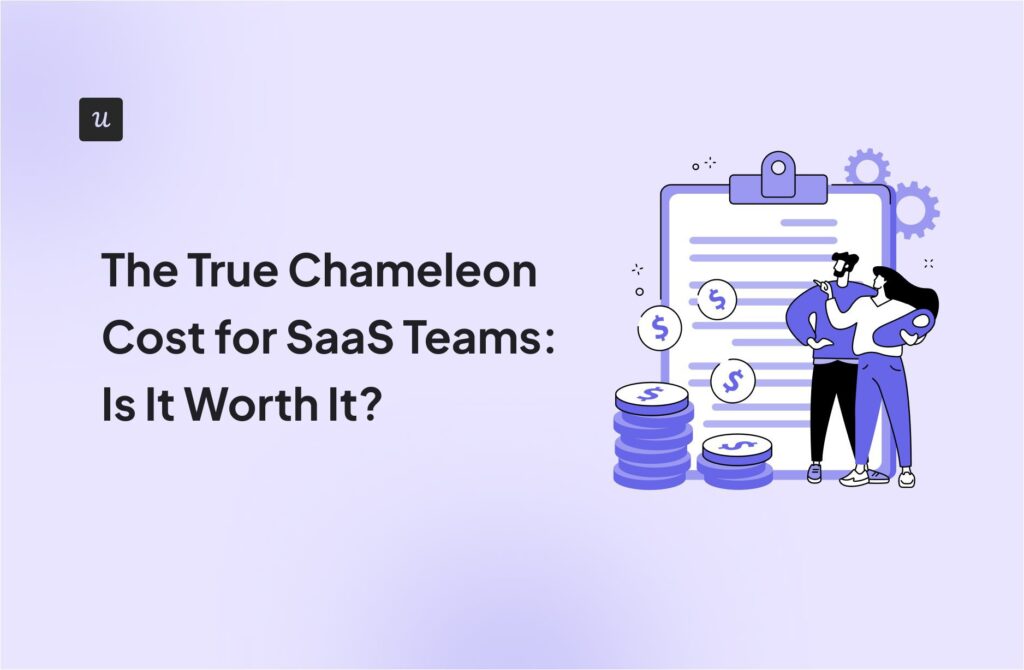
Curious about the Pendo Resource Center? This article breaks it down, showing its features, limitations, and available alternatives.
Resource Centers are great for providing self-service support. If built well, a good Resource Center will reduce the load on your support and digital product teams. It will even enhance product engagement because the customer will encounter less friction with your product.
Let’s examine Pendo to see if its solution can serve the purpose of a modern Resource Center.
Try Userpilot Now
See Why 1,000+ Teams Choose Userpilot

What is Pendo?
Pendo is a digital adoption software that enables its customers to create product experiences for the end-users.
Some things you can use Pendo to accomplish include user onboarding, product engagement analytics, and in-app support, among others. Resource Centers are part of the in-app support solution, and that’s what we’ll be examining in this article.
What is Pendo Resource Center?
A Resource Center is an in-app feature that enables users to access on-demand help without contacting human support.
Resource Centers typically include help docs, articles, tutorial videos, and any content format that provides the customer with the help they need.
The Resource Center functionality on Pendo (formerly the Guide Center) helps customers build Resource Centers on their apps without coding.
Here’s what it looks like:

Is the Pendo Resource Center feature available on the free plan?
The short answer is no.
Pendo Resource Center is considered part of the Guides feature, which is only available on paid plans. This design is probably why you can only add Guides to the Resource Centers (more on that in the next section).
Overview of Pendo Resource Center
The Pendo Resource Center comes with modules for different content types that customers would like to make available to their users. Let’s go over these modules and what each of them represents.
- Guides List: This module contains the different types of Guides you’ll want to create for end users. Help articles and FAQs fall under this category.
- Onboarding module: This is much like the Pendo Guides above. The only difference is that this module is specifically designed for onboarding new users. As you create
- Announcements: Want to send short notifications to users? This feature helps you do just that. The messages are delivered through the Resource Center, and users will get notification indicators for messages they haven’t opened. However, this feature might not be best for the notifications you want users to see immediately since they’ll have to go to your Resource Center to access the message.
- External Website: It allows you to create an iframe that points to a page on any other website so you can display external resources or embed YouTube videos inside of your Resource Center.
- Listen visitor portal: Adds an ideas portal from the lesson module to your Resource Center. So your visitors can see what projects or modules you are working on and provide their own suggestions and feedback when required.
- Pendo Feedback (Classic): As the name suggests, this module enables users to send and prioritize feedback.
- Code Sandbox: Don’t see the module that fits into what you’re looking to create? This feature is for you. The code sandbox allows users to custom code desired modules using HTML, CSS, or JavaScript.
- Integrations modules: This section shows supported third-party tools you can attach to your Pendo account and create desired experiences.
To summarize, you have seven different modules for grouping content: Guides List, Onboarding, Announcements, and the Code Sandbox.
Limitation of Pendo Resource Center modules
The previous section covered some limitations of Pendo’s Resource Center modules. Let’s examine them in more detail.
Modules configuration
As mentioned earlier, Pendo comes with predefined modules where you can group your content. These include Guides, Onboarding, Code Sandbox (the option to custom-code a module), and Announcements Module.
Guides and onboarding modules are pretty much the same thing, and you can only add preset guides. For use cases outside the predefined modules, Pendo offers a Code Sandbox to create custom modules using HTML/CSS/JS, though this may require developer involvement.
You can rename all of the modules on Pendo to a more user-friendly title without disrupting the internal naming convention.
While Pendo offers several modules, including Guides, Onboarding, Announcements, and custom options, its structure limits how flexibly you can organize large amounts of content. Without the ability to add unlimited custom categories out of the box, users with complex support needs may find it harder to surface the right help quickly.
Adding more modules
The Pendo Resource Center offers options for a native knowledge base and live chat only through their integrated modules.
If you don’t see what you need in the Integrations Hub, you may need to custom-code them. Keep in mind that integrations will attract extra costs, as stated earlier.

Targeting and segmentation
Targeting and segmentation are powerful tools for personalizing the user experience, and you want to make use of them every chance you get.
Pendo enables users to target specific audiences for each Resource Center module using predefined segments. While its segmentation capabilities are robust, supporting metadata, behaviors, and custom events, the workflow could be smoother. If a needed segment doesn’t already exist, users must leave the Resource Center builder to create it in a separate interface, which can interrupt the setup process and feel less intuitive compared to fully integrated segmentation flows.

Brand personalization
For brand personalization, Pendo offers the following:
- Badge icon: This is set to a circle, but you can add your custom image.
- Badge color: The default color is Pendo’s pink. However, users can change the colors to fit their brand image.
- Alert badge: Appears when the end-user has an unread notification. It’s a nice UI move to ensure users don’t miss announcements.

The bottom right corner is the default badge location, but this can be adjusted as desired.
Resource Center localization
There are typically two types of businesses: The ones with localization teams and those without localization teams, which are the majority.
Pendo now offers AI-powered localization for in-app guides and Resource Center content, enabling automated translations into multiple languages with just a few clicks. This advancement reduces the need for manual XLIFF file imports and dedicated translation teams.
However, it’s important to note that AI localization is available as an add-on feature.
Missing features from Pendo Resource Center
Resource Centers exist to provide true self-service support that makes life easier for you and your customers, but Pendo lacks key vital features. Let’s go over them.
Missing content types and modules
Pendo doesn’t offer native live chat or a full-featured knowledge base in its Resource Center. These require third-party tools and may incur added costs.
While that’s common across many platforms, teams needing these features built-in might find Pendo’s native module set limiting compared to more expansive alternatives.
No search functionality
A Resource Center allows teams to empower end-users with answers and contextual guidance on demand.
To enable this, you need a search functionality that allows the customer to find answers right within it to increase stickiness and usage. But Pendo’s Resource Center doesn’t serve this purpose.
Yes, it does have a search option, but it only allows you to search the content inside the Resource Center itself. Broader search capabilities require third-party integration and setup.
Userpilot’s Resource Center is different. It’s built with a search functionality that includes searching both the Resource Center content and other external knowledge bases.
The search functionality is available with the following search engine providers, too:
- Zendesk
- HubSpot
This Userpilot’s Resource Center functionality will no doubt provide a richer user experience for your customers.
Limited video support
Have you struggled to understand a particular feature despite reading help articles on it, then watched a video, and everything became clear?
It’s a common experience as videos tend to explain stuff better. That’s not to mention the fact that most people naturally prefer videos to reading content.
Pendo does allow you to embed videos in the Resource Center, but only through external iframes (e.g., from YouTube or Vimeo). While functional, this approach lacks native in-app video playback and can lead to slower load times or disrupted experiences, especially if users have to toggle between tabs.
Again, Userpilot is different here. You can embed videos from various streaming providers such as Witsia, Vimeo, YouTube, SendSpark, Vidyard, etc. These videos play directly inside your app, giving users a smoother, more focused experience without needing to leave your product interface.

Limited resource center analytics
Understanding the performance of the Resource Center over time is crucial for teams to make enhancements and reorganize in a way that better serves their end-users.
Pendo only has certain resource center analytics features as follows:
- Resource Center metrics, including views, visitors, and usage, for comparative insights into which modules are used or not used.
- Top Stats chart highlighting the overall usage of your Resource Center.
- The modules table with usage and configuration details for all of the modules and any guides in those modules.

If you need deeper insights like search term analytics or granular tracking across multiple content types in one view, Userpilot offers more advanced capabilities. Pendo does provide guide-level and module usage data, but may fall short for teams needing more detailed content performance breakdowns.

Better Pendo alternative for building in-app Resource Centers: Userpilot
To recap, Pendo is a great product, but its Resource Center is limited in the following areas:
- The Pendo Resource Center only allows you to search content in the Resource Center itself. Users will have to search elsewhere to find extra information when they need it.
- Pendo doesn’t provide automated translations, only as a paid add-on.
- The feature has limited video and analytics capabilities.
To add to these limitations, Pendo customers will have to be on the paid plans to access the Resource Center feature. While the pricing for these plans is not clearly stated on their website, online reviews show that they’re quite expensive.
If you want a Resource Center that doesn’t have these limitations, then Userpilot is your plug. You’ll find the Resource Center feature included in the Growth plan and above!
Offer different types of help modules
One advantage Userpilot has over Pendo is the ability to add everything you need without paying extra fees.


Advanced Resource Center settings to deliver targeted support
Userpilot also lets you set target audience groups, but the app has more in-depth segmentation options.
For instance, you can set modules to be triggered on specific user paths. You can also add specific conditions based on user attributes, app engagement, custom events, etc.

Provide on-demand help for your users with AI localization
But Userpilot supports both manual and automated translation.
Userpilot’s automated translation service gives teams without translators the full ability to translate their Resource Center content back and forth between 32 different languages with a click of a button.

Advanced Resource Center personalization
How does Userpilot compare in terms of personalization?
Userpilot’s Resource Center lets you do anything Pendo could with a few extras:
- You can add different badge icons if you so desire (Pendo lets you stick to just one).
- You can add icons to every module, creating more engaging and personalized experiences that match your brand’s personality.

Actionable Resource Center analytics to improve self-serve content
In addition to analytics features that Pendo offers, you can also find in Userpilot the following analytics functions for your Resource Center:
- Content Analytics: On this page, you’ll find comprehensive analytics for your Resource Center, detailing the number of clicks on each module and the timestamp of the last click. You can review analytics across three tabs: Home, Help, and News.

- Post Analytics: With user data such as clicks, target users, etc., and information for internal tracking like Updated By – The user name of the team member who has last updated the post.

- Search Analytics: In this tab, you’ll discover the searches users conduct. You’ll see a list of titles users have searched for, along with the number of searches for each title. This data helps in customizing content to meet user needs. Additionally, you’ll determine whether the last search event delivered any results.
Conclusion
Now you know what to expect from Pendo Resource Center without filling out a demo request form or signing up for any of the plans.
We’ve also gone over its limitations, so you’ll see what you’re getting into. In addition to that, this article has shown you a viable alternative to Pendo.
So, which of the SaaS tools will you choose? We can’t select for you, but based on the price and functionalities we’ve compared, Userpilot seems like the software that will provide a better bang for your buck.
Get a Userpilot demo to get started building a Resource Center for your tool.
Userpilot strives to provide accurate information to help businesses determine the best solution for their particular needs. Due to the dynamic nature of the industry, the features offered by Userpilot and others often change over time. The statements made in this article are accurate to the best of Userpilot’s knowledge as of its publication/most recent update on May 9, 2025.







